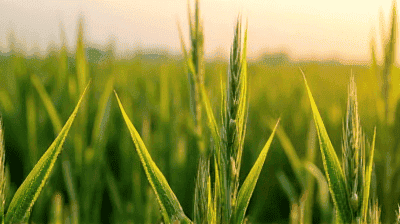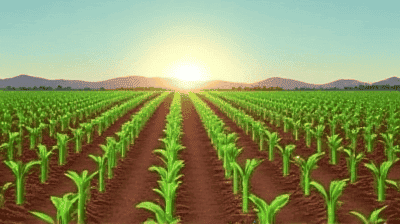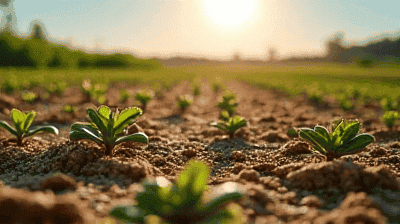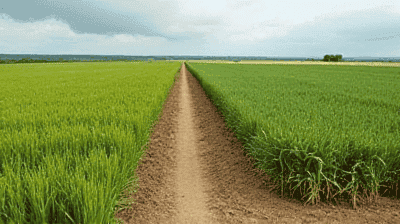
As climate change intensifies, droughts are becoming increasingly common and severe across the globe. These prolonged periods of insufficient rainfall not only threaten water supplies but also significantly impact agricultural productivity, food security, and livelihoods. With agriculture being heavily dependent on consistent water supply, the urgency to develop drought-resistant crops has never been greater.
Drought is typically defined as an extended period of deficient rainfall relative to the statistical multi-year average for a region. This lack of water can result in crop failures, soil degradation, and significant economic losses. Drought can be categorized into various types:
Meteorological Drought: Based on the degree of dryness compared to normal conditions, usually measured by precipitation levels.
Agricultural Drought: Occurs when soil moisture is insufficient to meet the needs of crops.
Hydrological Drought: Relates to the effects of prolonged dry periods on water resources, often leading to reduced river flows and reservoir levels.
Socioeconomic Drought: Arises when the supply of some economic goods, such as food or water, falls short of demand, resulting in repercussions for livelihoods and communities.
Drought can have devastating effects on agriculture, including:
Reduced Crop Yields: Limited water supply can lead to decreased growth rates and lower crop yields, threatening food production and security.
Soil Degradation: Prolonged drought can lead to soil erosion, loss of soil fertility, and decreased agricultural productivity.
Economic Consequences: Farmers may face significant financial losses due to reduced harvests, leading to a ripple effect on local economies and food supply chains.
Social Impacts: Drought conditions can lead to food shortages, increased food prices, and conflicts over water resources, impacting vulnerable communities disproportionately.

Drought-resistant crops are specially developed to withstand periods of low water availability. They exhibit several adaptive traits, such as:
Efficient Water Use: These crops are designed to utilize water more efficiently, minimizing loss through transpiration.
Deep Root Systems: Many drought-resistant crops develop deeper root systems, allowing them to access moisture from deeper soil layers.
Physiological Adaptations: Some crops can close their stomata during drought conditions to conserve water, while others may adjust their metabolic processes to maintain growth.
Increased Resilience: Drought-resistant crops can withstand stress from water scarcity, ensuring food production even under challenging conditions.
Sustainable Practices: By promoting water conservation, drought-resistant varieties can support sustainable agricultural practices and resource management.
Economic Stability: Farmers growing drought-resistant crops are better positioned to weather drought conditions, improving their economic resilience and reducing the risk of crop failure.
Biodiversity Preservation: Developing and adopting diverse drought-resistant crops can help maintain biodiversity in agricultural systems.
Genetic engineering offers innovative approaches to developing drought-resistant crops by directly altering an organism’s genetic material to introduce desirable traits. Key methods include:
Marker-Assisted Selection: This technique uses genetic markers to identify specific traits associated with drought tolerance, allowing breeders to select the best-performing plants more rapidly.
Transgenic Crops: Scientists can introduce genes from other organisms that confer desirable traits, such as resistance to drought or improved water-use efficiency.
Genome Editing: Techniques like CRISPR-Cas9 allow precise changes to be made in the DNA of crops, enabling the introduction or deletion of specific traits related to drought resistance.
Drought Tolerant Maize for Africa (DTMA): Developed through a partnership involving the International Maize and Wheat Improvement Center, this maize variety incorporates drought-tolerant traits to enhance food security in African countries experiencing water scarcity.
Golden Rice: While primarily known for its enhanced vitamin A content, Golden Rice has also been developed to withstand abiotic stress, including drought conditions.
Transgenic Soybeans: Some genetically modified soybeans have been engineered to express drought-related genes, thereby improving their tolerance to water stress and reducing yield losses in dry conditions.
Public Perception: The introduction of genetically modified organisms (GMOs) remains controversial. Public concerns over food safety, environmental impacts, and corporate control of the seed supply may hinder acceptance.
Regulatory Barriers: In many countries, stringent regulations surrounding the approval and commercialization of genetically engineered crops can slow down their development and adoption.
Ecological Risks: Introducing genetically modified crops into ecosystems raises concerns about unintended consequences, such as gene flow to wild relatives, pollen spread, and effects on biodiversity.

Alongside genetic engineering, traditional farming methods also play a significant role in developing drought-resistant crops and enhancing resilience in agricultural systems. Key practices include:
Crop Rotation: Rotating different crops can improve soil health and moisture retention while breaking pest and disease cycles.
Cover Cropping: Planting cover crops during off-seasons helps retain soil moisture, prevent erosion, and improve soil structure.
Mulching: Applying organic or inorganic mulch provides a protective layer on the soil surface, reducing evaporation and helping to maintain moisture levels.
Conservation Tillage: Reducing tillage decreases soil disturbance, enhances moisture retention, and promotes soil health.
Traditional crop varieties, often referred to as landraces, are cultivated to adapt to local environmental conditions, including drought. These varieties can have unique traits that make them more resilient to water scarcity. Some examples include:
Ancient Grains: Crops like quinoa and millet are known for their drought tolerance and have been cultivated for centuries in arid regions.
Drought-Resistant Wheat: Certain local varieties of wheat have been bred over generations to withstand low water conditions, making them valuable for farmers in dry areas.
Maize Landraces: Traditional maize varieties often show great adaptability to local conditions and can exhibit resilience to drought compared to modern hybrids.
Biodiversity Conservation: Emphasizing traditional varieties and farming practices helps maintain biodiversity, which is vital for ecosystem health and resilience.
Cultural Heritage: Traditional farming methods and crops are deeply rooted in cultural practices and knowledge, contributing to food sovereignty and community identity.
Adaptability: Local crop varieties are better suited to specific climatic conditions, making them more adaptable to changing environmental challenges.
Combining genetic engineering with traditional farming practices can create a powerful framework for developing drought-resistant crops and enhancing agricultural resilience. This integrated approach recognizes the value of biotechnology while honoring traditional knowledge and sustainable practices.
Participatory Breeding: Engaging local farmers in breeding programs can ensure that new varieties developed through genetic engineering meet their practical needs and preferences.
Community Seed Banks: Establishing local seed banks that preserve traditional varieties while also providing access to genetically improved seeds encourages agricultural diversity and resilience.
Education and Training: Providing farmers with education and training on both genetic advancements and traditional techniques can foster adaptive management practices that enhance drought resistance.
Research Collaboration: Collaborative research efforts involving scientists, farmers, and indigenous communities can lead to better understanding and innovations in drought-resilient agriculture.
The Water Efficient Maize for Africa (WEMA) Project: This initiative combines biotechnology and traditional techniques to develop drought-tolerant maize varieties tailored for African farmers to ensure food security amid climate challenges.
The International Crops Research Institute for the Semi-Arid Tropics (ICRISAT): By integrating modern breeding techniques with traditional farming practices, ICRISAT has developed several drought-resistant varieties of sorghum and pearl millet that are being adopted by farmers across dryland regions.
Local Breeding Initiatives: Various agricultural projects in regions vulnerable to drought involve participatory breeding, where communities collaborate with scientists to develop crop varieties based on both scientific and indigenous knowledge.

The looming threat of drought, exacerbated by climate change, demands urgent action and innovative solutions in agriculture. Drought-resistant crops represent a key component of global efforts to ensure food security under increasingly challenging climatic conditions. Genetic engineering and traditional farming practices each offer unique advantages in developing these resilient crops, and integrating both approaches can yield significant benefits.
By fostering collaboration among scientists, farmers, and communities, we can cultivate a diverse agricultural landscape that meets the needs of present and future generations. Emphasizing education, diversity, and sustainability will be critical as we work to create resilient food systems and mitigate the impacts of drought on agriculture.
As we continue to navigate the complexities of climate change, the development and adoption of drought-resistant crops will be essential for ensuring that our food systems remain robust, adaptable, and sustainable in the face of increasing environmental challenges.